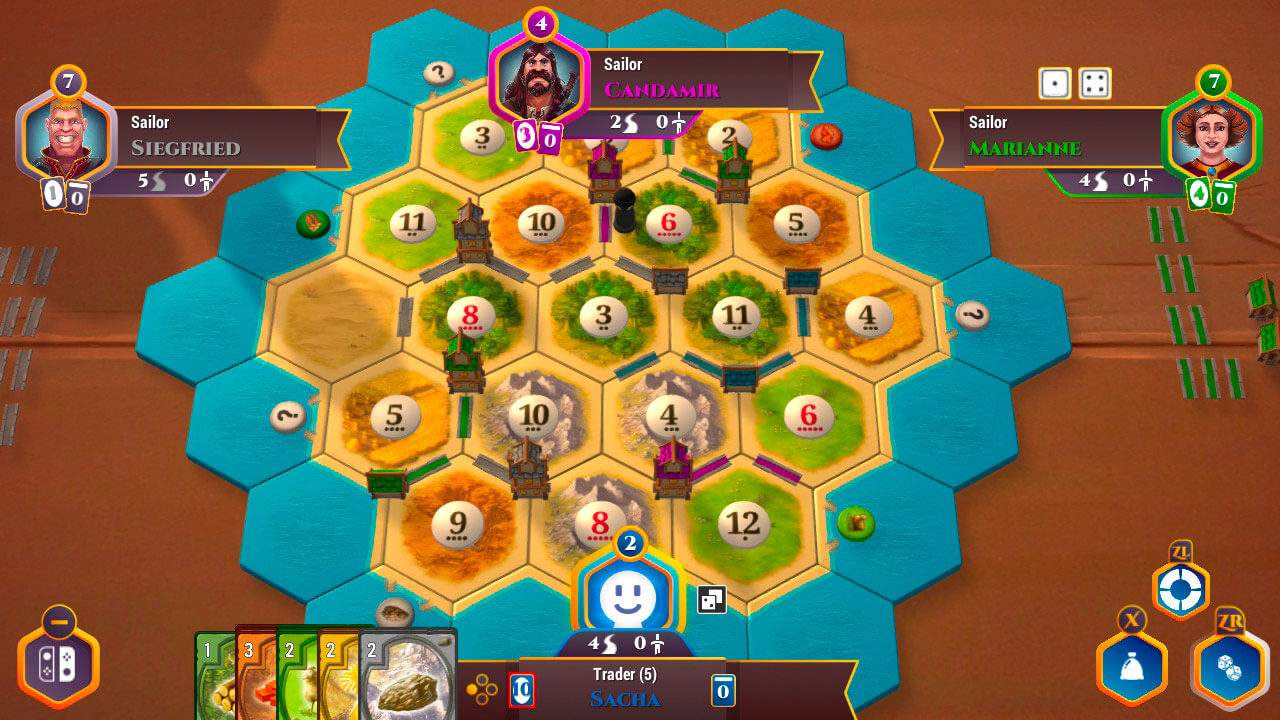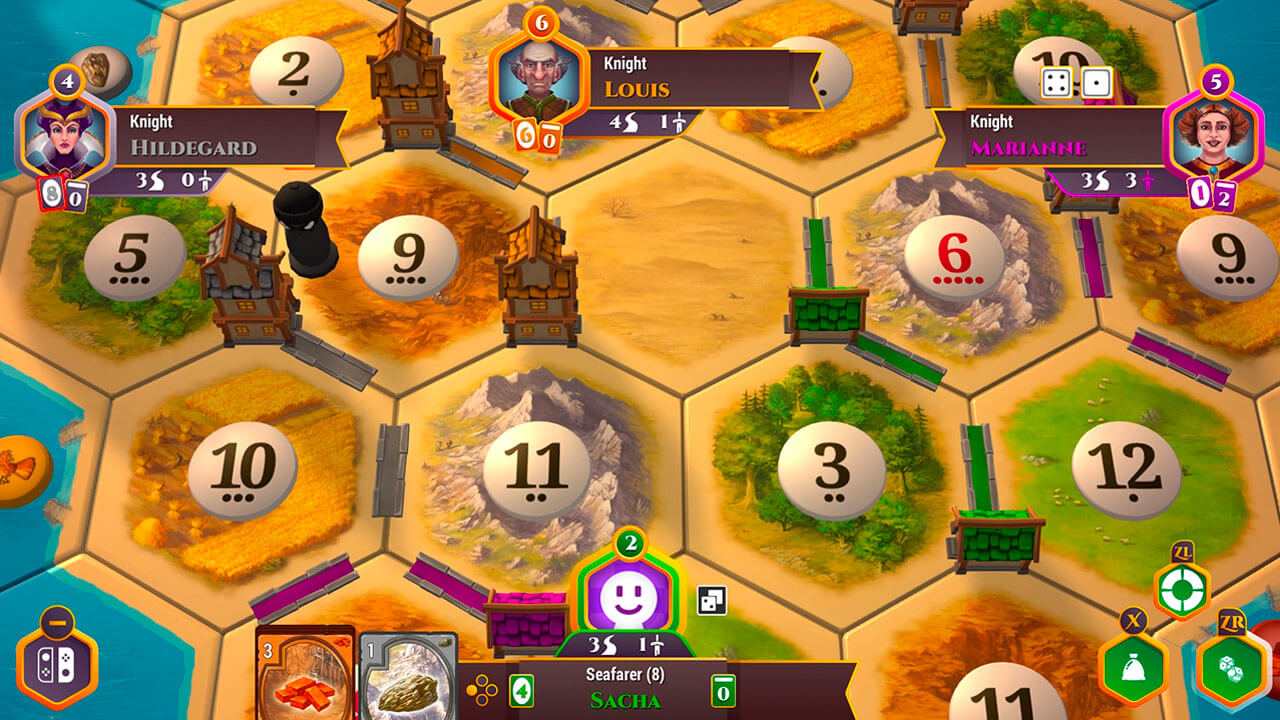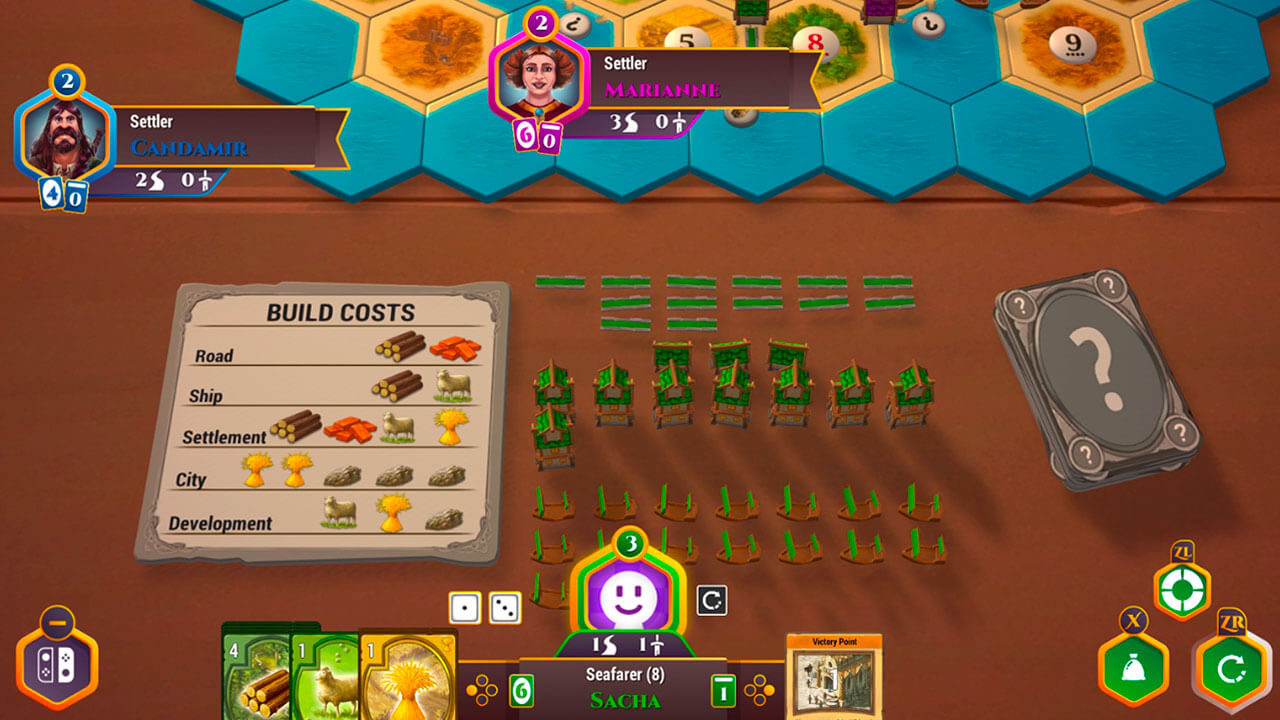Catan — set sail for Nintendo Switch
There are few board game fans that won’t have heard of Catan; the game which (alongside Ticket to Ride and Carcassone) has become the poster child for a new generation of modern board games. Between these three games, an entire movement was reshaped and reformed, where otherwise board games might have died out entirely because of the digital age. Now, we go full circle, because Catan can be played on your Nintendo Switch.
Actually, Catan is just one of many digital adaptations of popular board games released under the Asmodee Digital brand and it might just be the most important title in the series to date. There are fewer board games that are simpler to pick up, learn and understand than Catan is, so the digital version should be a cheap, easy way for curious players to get into board gaming.
The objective of each game is straightforward and simply requires the players to aim for a set number of points, which will usually be eight. Building towns and cities are the most common ways to score points (worth one and two respectively) whilst creating a road of five continuous pieces will also net the first player to achieve it another point. There are a few other ways, but it’s all very clear and easy to understand.
A standard game of Catan is always played on a modular, hexagonal board comprising of nineteen tiles, each of which will be placed randomly and will show a number and a terrain type which I’ll explain in a moment. In these standard games, a central desert tile will be placed, showing no number but with a thief pawn placed upon it.

The Switch version of Catan also includes an expansion that introduces sea tiles and allows the board to vary considerably from the default layout, which allows players the opportunity to expand their empires via boat, as well as on land. In either the standard or more advanced modes of play, Catan retains a level of mechanical simplicity that is always accessible, but the decisions you’ll need to make will become more complex.
What you’ll actually be doing each turn is rolling dice and drawing resources, initially, and then deciding what to do with them. Every player benefits from the roll of the dice on each other player turn and this works by simply allowing players to draw resources from tiles where they have an adjacent city or town, whenever the matching number is rolled. For example, if a six is rolled, then usually two tiles will yield the resources shown, but only to any players who have a build on one of the corners of those tiles.

Players take these resources and add them to any others in their hand, with those available being grain, wood, stone, bricks and livestock. Each improvement (roads, towns, cities and so on) costs a set number of resources and players are free to trade with each other (advantageously or otherwise) on their turns, before deciding what action to take — if any. It’s not unusual for a turn to end without any action being taken, especially if the other players detect that the active player is close to winning and so refuse to trade with them.
The Switch version delivers all of these basic systems clearly and in a way that is visually sound. The game looks just like the board game, offering little by way of flourishes or special effects that might slow it down, but whilst still clearly showing the players what changes on the board as a turn unfolds. A tutorial introduces new players in a simple and rapid manner, but you’ll soon be done with it and ready to move onto the campaign or one of the multiplayer options.

Where the campaign is concerned, Catan offers more or less all the content that a solo player could stomach. There are countless games to be played against a multitude of different player counts and with all of the variant rules presented at one time or another. The game attempts to offer a continuous series of games and mechanically, it achieves that, but in terms of story or real advancement in the way you might expect from a video game — there simply isn’t any. It’s just one game after another, with some specific conditions thrown into the mix.
The multiplayer game is, unfortunately, quite limited. Firstly, there’s no local option, which I think is a shame given that something could have been worked out by passing the switch console around (in order to ensure that hands remain hidden.) Secondly, the online multiplayer seems fraught with issues. Either you will have to create a fully private lobby (limiting your game size to however many friends you can wrangle) or you’ll need to join a completely random game.

Now, given the number of players actually online, it’s fairly likely that starting a game at the same time as your pal(s) will get you into the same place at the same time, but it’s still fiddly. Thankfully, the actual game is stable once you enter it and I haven’t had too much trouble with other players dropping out, which I guess is likely to be because players who’ve invested in this kind of game kind of know what the experience is supposed to be like.
Ultimately, the Nintendo Switch version of Catan is a solid digital representation of the board game that seems oddly focused on the solo player. The multiplayer options are either poorly implemented or deliberately limited in a way that makes them feel hard to really make the most of, whilst the solo game is feature rich, but fairly boring. Visuals and sound effects are fine and there’s nothing else to complain about. However,when all is said and done, I’m sorry to say that Catan just feels a bit mediocre.
You can find Catan on the Nintendo Switch.
Comments are closed.